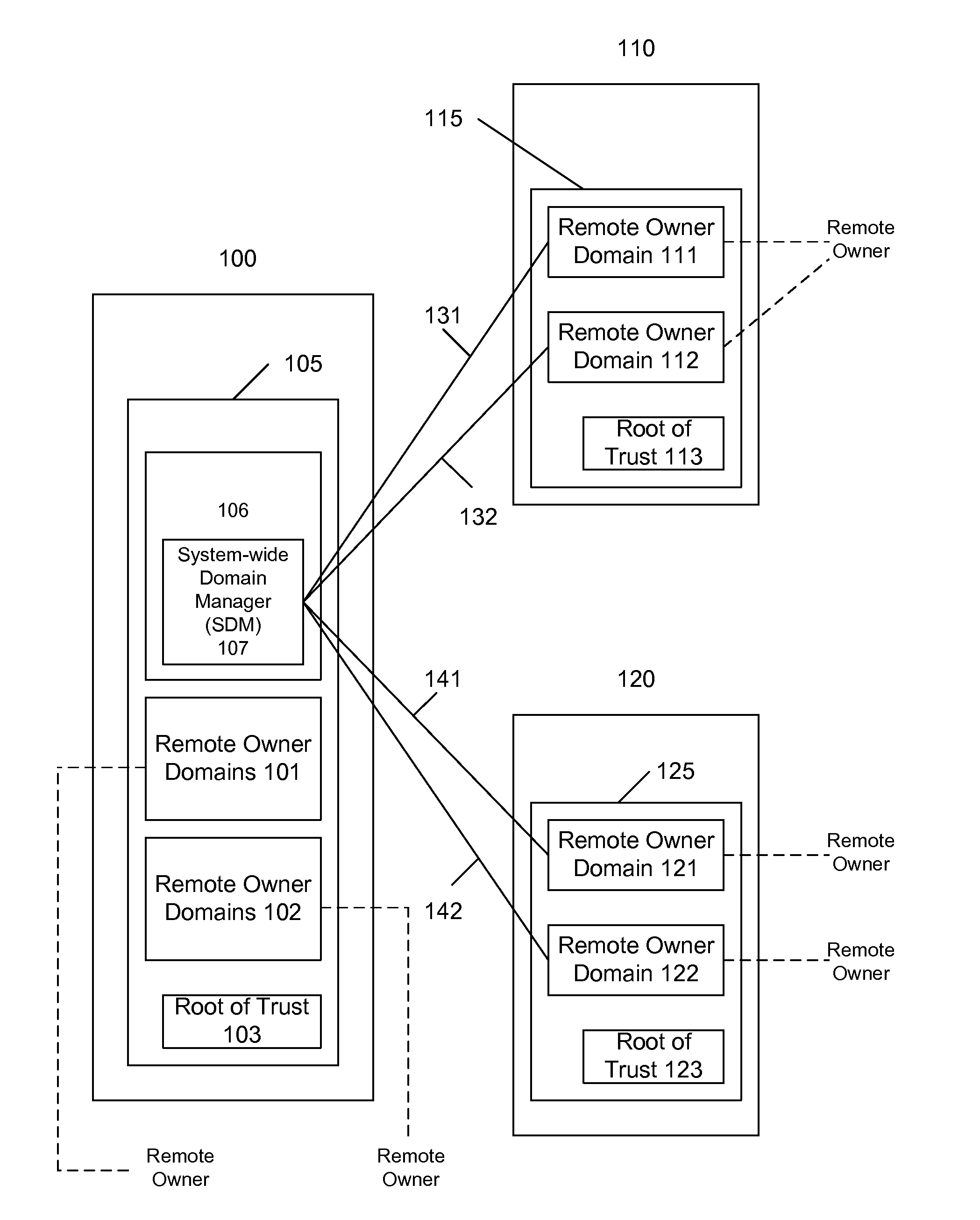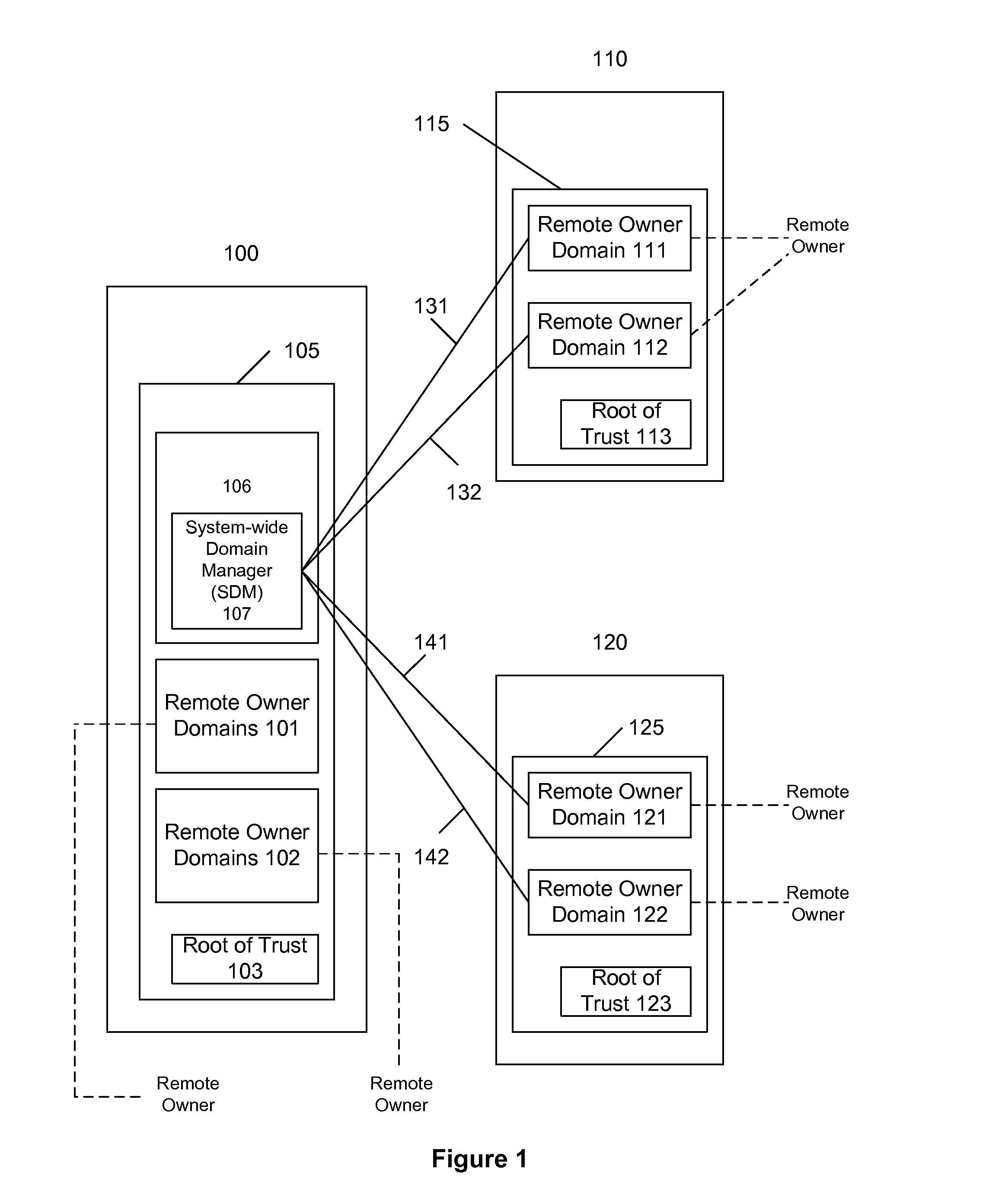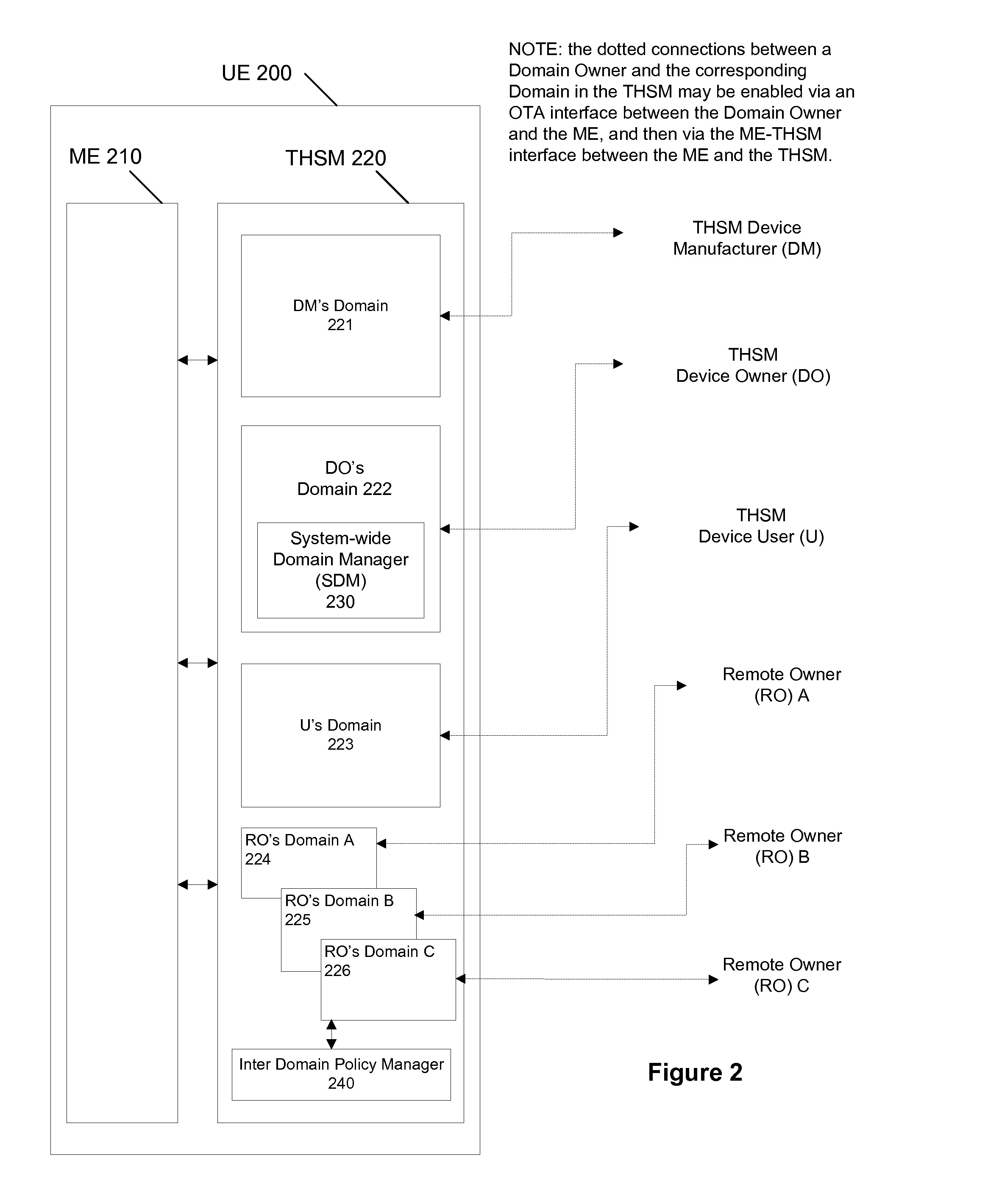System of multiple domains and domain ownership
a domain and domain technology, applied in the field of multiple domains and domain ownership, can solve the problems of preventing business models, limited use of the sim/uicc mechanism with a single network operator, and limited computing devices
- Summary
- Abstract
- Description
- Claims
- Application Information
AI Technical Summary
Benefits of technology
Problems solved by technology
Method used
Image
Examples
fourth embodiment
In a fourth embodiment, both the ME and the THSM may be configured to perform full MTM functionality. The trustworthiness of the ME, or its domains, may be attestable by the ME, or by the domains directly. The ME's RO domain may report its states on a continuing, or per-request, basis to the RO. The THSM's RO domain may function similarly. The reports by the ME's RO domain and the THSM's RO domain may be synchronized and also may be bound to each other. The reports also may be made using a common session of a protocol flow.
In this embodiment, the ME may be configured to perform several functions of the THSM as described herein. The ME may include one or more domains of its own, each with respect to a particular owner. These domains may include the properties of trusted entities as per the THSM. Such domains may include a device manufacturer (DM) domain and a user (U) domain. These domains may be pre-configured in a manner similar to the THSM. To distinguish domains on the ME from th...
third embodiment
Referring to the third embodiment, the Mobile Trusted Environment (MTE) may be loaded following the completion of the base code boot process. With the use of a signing key the MTE may attest to the integrity of the ME platform configuration.
The ME, after loading the base codes, may periodically send a signal to the THSM, indicating that is has booted to a minimum secure setting. Since the THSM's DO's domain may not have yet booted when the signal is sent, the ME may send the same signal, with a different random nonce (nonce—1), until it receives an acknowledgement signal back from the DO's domain of the THSM. This signal may be expressed as:
Def) Package_1 = “ME Base Code Boot completed” MSG ||Equation 4nonce_1 || IDME ME → THSM's TDDO: Package_1 || [SHA-X(Package_1 )]Ktemp—I.
Referring to the third embodiment, the signaling may be expressed as:
Def) Package_1 = “ME Base Code Boot completedEquation 5& MTE loading” MSG || nonce_1 || IDMEME → THSM's TDDO: Package_1 || [SHA-X(Package_1 ...
PUM
 Login to View More
Login to View More Abstract
Description
Claims
Application Information
 Login to View More
Login to View More - R&D
- Intellectual Property
- Life Sciences
- Materials
- Tech Scout
- Unparalleled Data Quality
- Higher Quality Content
- 60% Fewer Hallucinations
Browse by: Latest US Patents, China's latest patents, Technical Efficacy Thesaurus, Application Domain, Technology Topic, Popular Technical Reports.
© 2025 PatSnap. All rights reserved.Legal|Privacy policy|Modern Slavery Act Transparency Statement|Sitemap|About US| Contact US: help@patsnap.com



